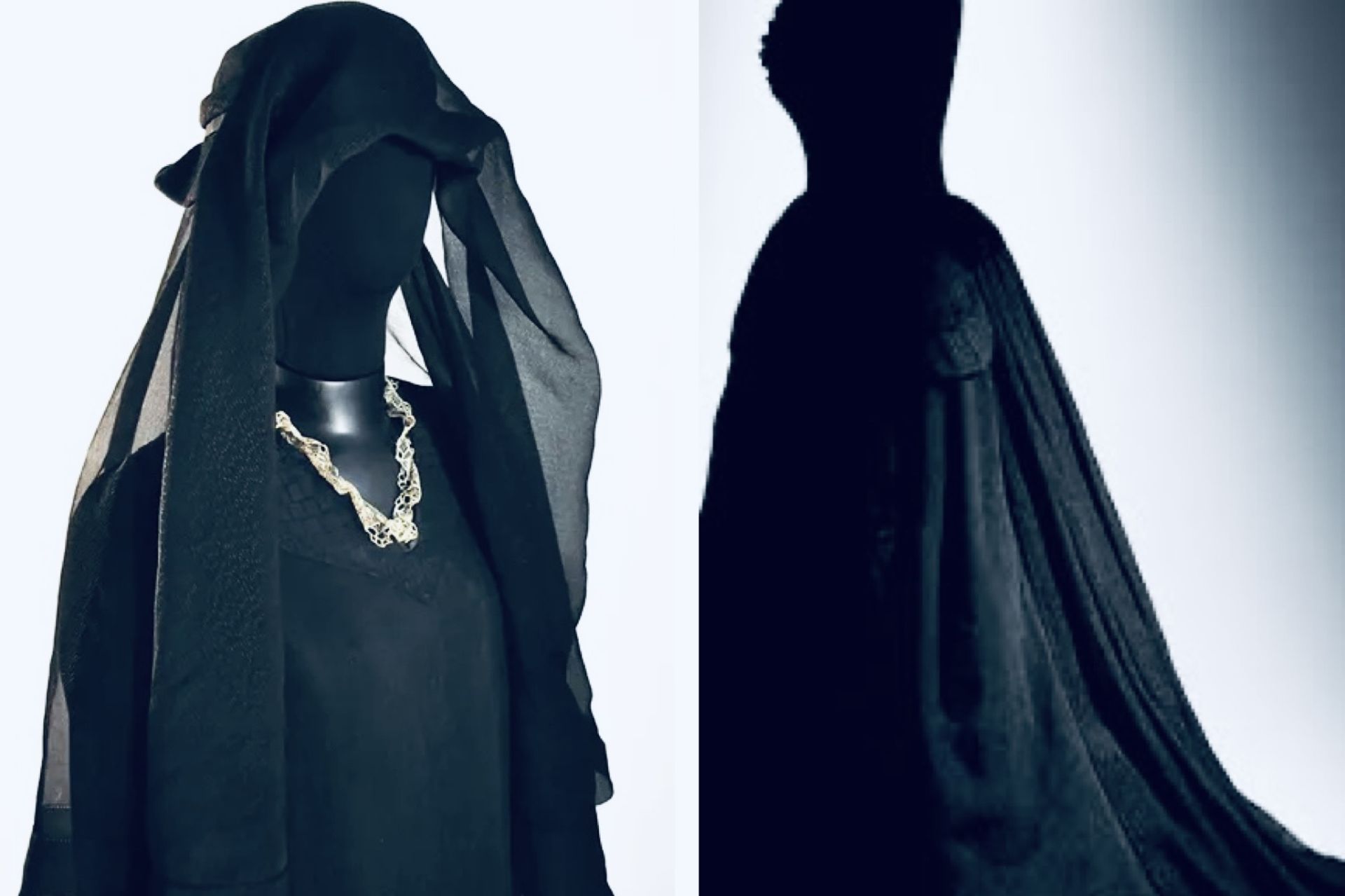
Behind black veils or white saris lies a silent language. In every culture, mourning attire embodies loss, erasure or defiance. A global journey through fabrics of female grief.
The death of a husband never left women untouched in terms of dress. From Victorian black crepe to Hindu white saris, a widow’s clothing is a signal. It embodies absence. It draws a line between before and after. It imposes on the female body a way of existing in the world, between pain, modesty and sometimes submission. And while mourning is universal, its garments vary with beliefs, climates, rituals and silence.
In Victorian England, the widow became a public figure of grief. She would wrap herself in full black for at least two years, sometimes up to four, while following strict rules: matte black crepe, opaque veils and total absence of jewelry. “Deep mourning” was almost a monastic state, paradoxically visible: one had to be seen as mourning, but without attracting attention. Over time, the rigidity of mourning would soften. “Half mourning” allowed grays, lavenders, even white. Pain turned pastel. But it remained stitched into the skin.
This extreme codification was the subject of a landmark exhibition at New York’s Metropolitan Museum of Art in 2014: “Death Becomes Her: A Century of Mourning Attire.” Through dresses, veils, jewelry and gloves, it traced a century of female grief in Western society. Black emerged not as a color but as a duty, an official uniform of loss. The elegance of mourning revealed the widow’s status: respectable, sacrificed, silent.
Codes of Female Mourning
In India, Hindu widows shed all adornment. Bright colors give way to plain white saris, without embroidery or shine. Jewelry is removed, and sometimes hair is cut. This bareness is not merely symbolic, it rather signifies a withdrawal from the world, a consignment to silence. In deeply traditional circles, a widow is no longer seen as a full woman. She becomes a shadow. Though widely challenged today, especially in cities, this view still stands in some rural regions.
By contrast, in many African cultures, mourning doesn’t always mean black. In Ghana or Togo, widows may wear red to express intense grief, or black for official ceremonies. Some fabrics are even printed with funereal motifs. In South Africa, some communities require plain garments for a year, often with a headscarf or specific wrap that marks widowhood. But here too, clothing can become a cage: in several African countries, mourning rituals like shaved heads, isolation or purification rites are now criticized as institutional violence.
In Muslim countries, the widow observes a mourning period called iddah, lasting four months and ten days. During this time, she wears discreet clothing, avoids bright colors, refrains from adornment and limits public outings. This is not just a religious rule but a time for transition, reflection and spiritual protection. It does not mandate a single color, like black or white, but a sobriety in dress, a voluntary fading from public life.
In cultures where white signifies purity and renunciation, such as China, Cambodia or Thailand, widows also wear white to signal detachment. In Cambodia, religious ceremonies may prescribe white tunics for several days. In Thailand, some elderly widows wear violet, a color reserved for late-stage mourning. Here, the silence of grief is tinged with Buddhist spirituality.
Further still, in Polynesian islands like Tahiti, mourning attire is made of natural fibers, shells and feathers. The heva tūpāpāʻu outfit connects the widow’s body to the realm of ancestors. It doesn’t conceal, it reveals. Grief becomes a sacred performance, a moment of passage and a bridge between the living and the dead.
In the Philippines, a country blending Catholic, Chinese and Indigenous traditions, widows oscillate between black and white. Depending on their cultural background, mourning is marked by subdued dress and ritual gestures: abstinence, prayer and social withdrawal. A way of wearing pain, literally and figuratively.
A Fabric Language
In all these cultures, the widow’s dress becomes a form of language. It speaks pain without words. It imposes restraint, codifies behavior and frames femininity. To be a widow is sometimes to be watched, judged or contained. Some traditions isolate her, others cast her into a sacrificial role. But everywhere, mourning garments reflect the same tension: how does society reintegrate a woman once she is no longer a wife?
Today, in modern or diasporic societies, these codes are being reimagined. Some widows wear black by choice, others don’t. Some reclaim local traditions as an identity, others reject them as a burden. Grief becomes personal, sometimes silent, sometimes defiant. But the body remains the first canvas on which loss is written.

Comments